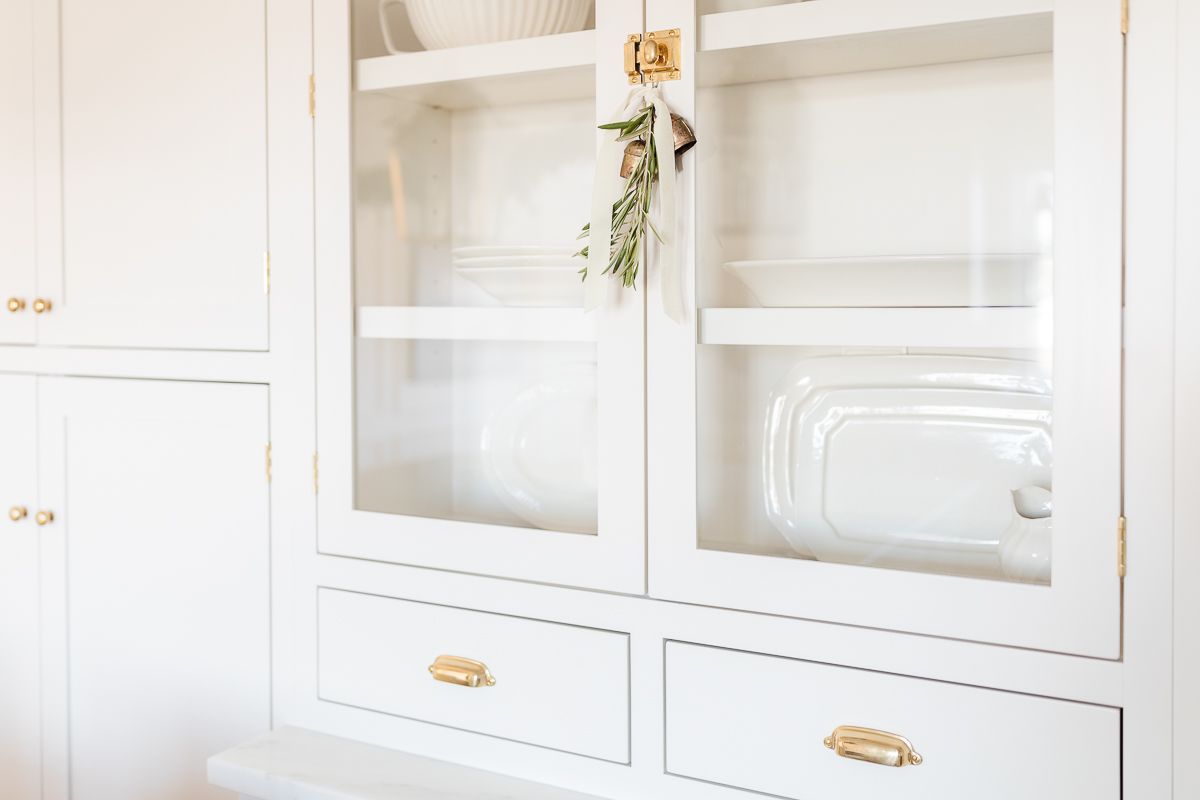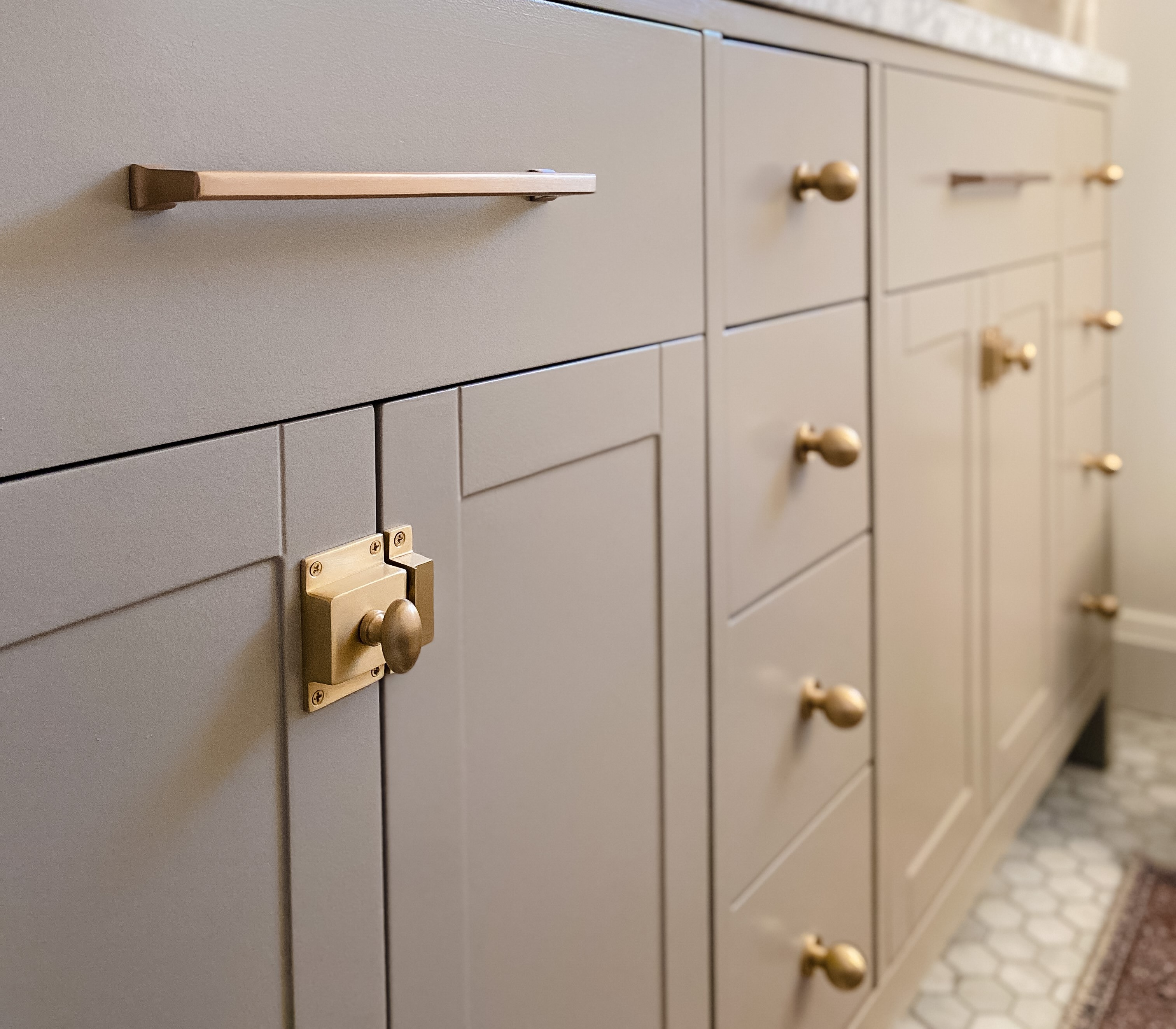Types of Latches for Kitchen Cabinets: Kitchen Cabinets With Latches

Choosing the right latches for your kitchen cabinets is crucial for both functionality and aesthetics. Latches ensure your cabinet doors stay securely closed while providing easy access when needed. There are various types of latches available, each with its own advantages and disadvantages.
Magnetic Latches
Magnetic latches are a popular choice for kitchen cabinets due to their sleek and modern appearance. These latches consist of a magnetic component that attracts a metal plate on the cabinet door, holding it closed.
- Advantages: Magnetic latches are known for their ease of use. They require minimal effort to open and close, making them ideal for cabinets that are frequently accessed. They also provide a secure hold without the need for a traditional latch mechanism. Additionally, magnetic latches are available in various styles and finishes, allowing for seamless integration into any kitchen design.
- Disadvantages: While magnetic latches offer convenience, they may not be suitable for heavy cabinet doors or those with significant weight. The magnetic force may not be strong enough to hold the door securely closed, especially in high-traffic areas. Furthermore, magnetic latches can be susceptible to interference from nearby metal objects, potentially affecting their functionality.
Examples:
* Blum Aventos HF: This magnetic latch is designed for use with Blum’s Aventos lift system, providing a smooth and quiet closing experience for cabinet doors.
* Hafele Magnetic Cabinet Latch: This latch offers a strong magnetic hold and is available in various finishes to complement different cabinet styles.
Push-to-Open Latches
Push-to-open latches provide a seamless and modern look for kitchen cabinets. These latches are activated by applying pressure to the cabinet door, eliminating the need for visible handles or knobs.
- Advantages: Push-to-open latches offer a sleek and minimalist design, enhancing the overall aesthetics of your kitchen. They are also convenient to use, requiring only a gentle push to open the cabinet door. This type of latch is particularly well-suited for cabinets with a contemporary or modern design.
- Disadvantages: Push-to-open latches may not be as secure as traditional latch mechanisms, especially for cabinets containing valuable items. They can also be prone to accidental opening, particularly if the cabinet door is bumped or jostled. Additionally, some push-to-open latches can be more expensive than traditional latch mechanisms.
Examples:
* Blum Tip-On: This push-to-open latch system offers a smooth and silent opening and closing experience, available in various sizes and configurations.
* Grass Servo-Drive: This system uses a spring-loaded mechanism for a soft-close action, enhancing the functionality and aesthetics of push-to-open cabinets.
Traditional Latches
Traditional latches are the most common type of latch used for kitchen cabinets. They typically consist of a latch mechanism with a handle or knob that is used to open and close the cabinet door.
- Advantages: Traditional latches are known for their durability and reliability. They offer a secure hold for cabinet doors, making them suitable for cabinets containing heavy or valuable items. Traditional latches are also readily available in various styles and finishes, allowing for customization to match any kitchen design.
- Disadvantages: While traditional latches provide security and durability, they can be less aesthetically pleasing than other types of latches. They also require a handle or knob, which can take up space and add to the overall cost of the cabinet. Additionally, some traditional latches can be noisy when opening and closing, especially if they are not properly lubricated.
Examples:
* Salice Click-On Latch: This traditional latch offers a secure hold and a smooth opening and closing experience, available in various finishes and sizes.
* Hettich Sensys: This latch system provides a soft-close action, enhancing the functionality and aesthetics of traditional cabinet doors.
Installation and Maintenance of Cabinet Latches

Installing and maintaining cabinet latches is essential for ensuring the longevity and smooth operation of your kitchen cabinets. This involves understanding the different types of latches, their installation processes, and how to address common issues that may arise.
Installing Cabinet Latches
Installing cabinet latches requires specific tools and materials depending on the type of latch chosen. The following steps provide a general guide for installing various types of latches:
- Choose the Right Latch: Select a latch that complements the style and functionality of your cabinets. Consider factors such as the size of the cabinet door, the weight it needs to support, and the desired level of security.
- Mark the Installation Points: Position the latch on the cabinet door and mark the locations for drilling the holes. Ensure that the latch is aligned with the strike plate on the cabinet frame.
- Drill Pilot Holes: Use a drill bit slightly smaller than the screws provided with the latch to create pilot holes. This helps prevent the wood from splitting during installation.
- Install the Latch: Secure the latch to the cabinet door using the provided screws. Ensure that the latch is flush with the door surface.
- Install the Strike Plate: Attach the strike plate to the cabinet frame using screws. Align the strike plate with the latch so that the latch engages smoothly when the door is closed.
- Test the Latch: Close the cabinet door and test the latch’s functionality. Adjust the latch or strike plate as needed to ensure a secure and smooth closing action.
Adjusting and Maintaining Cabinet Latches
Regular adjustment and maintenance are crucial for keeping cabinet latches functioning optimally. Here’s a breakdown of key steps:
- Lubrication: Apply a small amount of lubricant to the latch mechanism, such as WD-40 or a silicone-based spray. This helps prevent sticking and ensures smooth operation.
- Tightening Screws: Check the screws that hold the latch and strike plate in place. Tighten any loose screws to ensure secure attachment and prevent rattling.
- Adjusting Latch Position: If the latch doesn’t engage properly, adjust its position by slightly loosening the screws and moving the latch slightly. Re-tighten the screws once the latch is in the correct position.
- Replacing Worn-Out Parts: If the latch mechanism is worn or damaged, consider replacing it with a new one. This ensures proper functionality and prevents further issues.
Troubleshooting Common Cabinet Latch Problems, Kitchen cabinets with latches
Cabinet latches can experience various issues over time. Here are some common problems and their potential solutions:
- Sticking Latch: This can be caused by dirt, debris, or lack of lubrication. Clean the latch mechanism and apply lubricant to address this issue.
- Latch Not Engaging: This could be due to a misaligned latch or strike plate. Adjust the position of either component to ensure proper engagement.
- Latch Not Releasing: A worn-out latch mechanism or a jammed strike plate can cause this problem. Check for any obstructions and consider replacing the latch or strike plate if necessary.
- Latch Rattling: Loose screws or a misaligned strike plate can lead to rattling. Tighten any loose screws and ensure the strike plate is properly aligned.
Kitchen cabinets with latches offer a layer of security, but their effectiveness is often undermined by simple design flaws. The same principles of security that apply to unlocking a bedroom door with a hole can be applied to kitchen cabinets, where a determined individual can often bypass a latch with a bit of effort and the right tools.
The lesson here is that while latches can deter casual access, they should not be considered a foolproof solution, and a combination of security measures is often necessary.
Kitchen cabinets with latches add an extra layer of security, especially for families with young children or valuable items stored inside. To ensure smooth operation and longevity of these latches, choosing the right hinges is crucial. Selecting the best hinges for kitchen cabinets can prevent wear and tear on the latches, ensuring they function properly for years to come.
